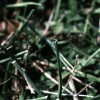 Irrigation is one of the most important cultural practices that we do for our lawns. Since water is a limited resource and is vital to the health of your lawn, it is very important that watering be done correctly. This 3-page fact sheet was written by L. E. Trenholm, J. B. Unruh, and J. L. Cisar, and published by the UF Department of Environmental Horticulture, April 2013.
Irrigation is one of the most important cultural practices that we do for our lawns. Since water is a limited resource and is vital to the health of your lawn, it is very important that watering be done correctly. This 3-page fact sheet was written by L. E. Trenholm, J. B. Unruh, and J. L. Cisar, and published by the UF Department of Environmental Horticulture, April 2013.
http://edis.ifas.ufl.edu/lh025
Tag: John L. Cisar
Zoysiagrass for Florida Lawns (ENH11/LH011)
Zoysiagrass maintenance is different from that of other Florida lawn grasses. When improper maintenance practices are followed, undesirable results are likely to occur. Learn the details about this attractive turfgrass that has been dramatically improved by turfgrass breeders in recent years. This 8-page fact sheet was written by J. Bryan Unruh, L. E. Trenholm, and J. L. Cisar, and published by the UF Department of Environmental Horticulture, June 2011.
http://edis.ifas.ufl.edu/lh011
Centipedegrass for Florida Lawns (ENH8/LH009)
Centipedegrass is a slow-growing grass with low fertility requirements when compared to other Florida lawn grasses. It grows close to the ground, is medium textured, and is naturally lighter in color than other lawn grasses. Well-adapted to the climate and soils of Central and Northern Florida, it is the most common home lawn grass in the Florida Panhandle. There is now one cultivar adapted to South Florida conditions. This 7-page fact sheet discusses the advantages and disadvantages of this turfgrass variety, cultivars available for lawn use in Florida, establishment, maintenance, pest management, and other problems. Written by J. B. Unruh, L. E. Trenholm, and J. L. Cisar, and published by the UF Department of Environmental Horticulture, April 2011.
http://edis.ifas.ufl.edu/lh009
St. Augustinegrass for Florida Lawns (ENH5/LH010)
St. Augustinegrass is widely adapted to the warm, humid (subtropical) regions of the world. It is the most commonly used lawn grass throughout the state of Florida and can grow satisfactorily in a wide variety of soils. This revised 11-page fact sheet discusses the advantages and disadvantages of this turfgrass variety, cultivars available for lawn use in Florida, establishment, maintenance, pest management, and other problems. Written by L. E. Trenholm, J. L. Cisar, and J. B. Unruh, and published by the UF Department of Environmental Horticulture, April 2011.
http://edis.ifas.ufl.edu/lh010
Bahiagrass for Florida Lawns (ENH6/LH006)
Bahiagrass is a popular, low-maintenance lawn grass that does well with limited water and fertilizer inputs. Although bahiagrass does not produce a carpet-like, dense lawn like some other warm-season lawn grasses, it does provide a good, low-maintenance lawn where slightly reduced visual quality is acceptable. This revised 7-page fact sheet was written by L. E. Trenholm, J. L. Cisar, and J. B. Unruh, and published by the UF Department of Environmental Horticulture,April 2011.
http://edis.ifas.ufl.edu/lh006
Bermudagrass for Florida Lawns (ENH19/LH007)
Bermudagrasses (Cynodon spp.) are among the most widely used warm-season grasses. Improved, fine-textured bermudagrasses are used throughout the south on golf courses, athletic fields, and in high-profile residential and commercial landscapes where a fine-textured, dense ground cover is desired. This revised 5-page fact sheet describes advantages, disadvantages, cultivars, maintenance, and pest problems. Written by L. E. Trenholm, J. L. Cisar, J. B. Unruh, and published by the UF Department of Environmental Horticulture, March 2011.
http://edis.ifas.ufl.edu/lh007
SL283/SS496 Unintended Consequences Associated with Certain Urban Fertilizer Ordinances
SL-283, an 11-page illustrated fact sheet by George Hochmuth, Terril Nell, Jerry Sartain, Bryan Unruh, Michael Dukes, Chris Martinez, Laurie Trenholm, and John Cisar, discusses the research behind turfgrass growth, biology, and ecology, and soil nutrient cycling in the lawn. The unintended consequences of fertilizer ordinance restricted periods are presented to open dialogue among the stakeholders in the ordinance issue and to ensure that all information is presented to completely inform the policy-making process. Includes references. Published by the UF Department of Soil and Water Sciences, March 2009.
http://edis.ifas.ufl.edu/SS496
ENH1114/WQ142 Frequently Asked Questions about Landscape Irrigation for Florida Friendly Landscaping Ordinances
ENH-1114, an 8-page fact sheet by Michael D. Dukes, Laurie E. Trenholm, Ed Gilman, Chris J. Martinez, John L. Cisar, and Thomas H. Yeager, was created to help guide local government officials in developing local regulations based on science. It uses a question and answer format to address common concerns related to water, irrigation, and landscapes and their maintenance. Includes references. Published by the UF Department of Environmental Horticulture, December 2008.
http://edis.ifas.ufl.edu/WQ142